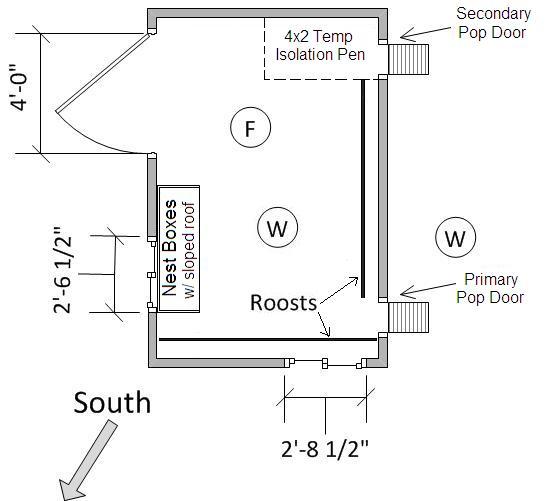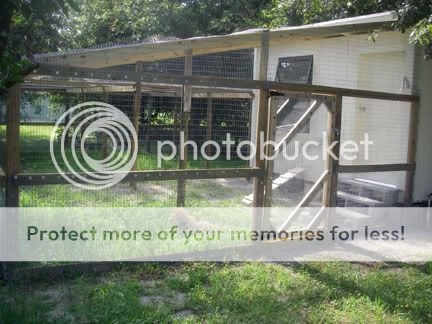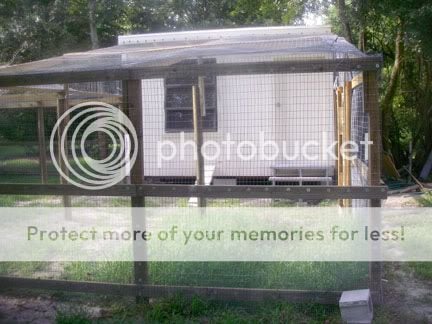I'm getting ready to start building my coop in the next few weeks and would appreciate any input! I'm located in central Oregon, so high-desert, semi-arid conditions. I'll be starting with 12 hens, larger breed layers, but I imagine there will be some expansion in the future.
I'm planning to go with an 8x12 gable shed style, 7' interior walls, plywood floor with a linoleum overlay. Vented soffits on the long sides, shingle vents on the ridgeline, and slider windows. The shed will be angled 45 degrees N/S, so the side and front windows will both get southern exposure (works best with surrounding buildings/trees to get the most light inside).
Below is my tentative layout. I was going to install the second chicken door as a backup and maybe put up a temporary wall at that end to save that portion of the building for storage/a private area for broody mommas in the future. But maybe they'll want both doors and all that room right off the bat? It seems like a lot of wasted space (maybe that's a good thing?)
Also, another question. I was going to build their run about 36'x20', with 6' fencing. But I did want to cover it with some sort of netting as we have the occasional bird of prey in the area. Any ideas on how to cover an area that large? Maybe I should go with something narrower, like 36'x10'? They will also have access to about 1 1/2 acres of chain link fenced free range area during the day.

Edited post to add drawing of coop
I'm planning to go with an 8x12 gable shed style, 7' interior walls, plywood floor with a linoleum overlay. Vented soffits on the long sides, shingle vents on the ridgeline, and slider windows. The shed will be angled 45 degrees N/S, so the side and front windows will both get southern exposure (works best with surrounding buildings/trees to get the most light inside).
Below is my tentative layout. I was going to install the second chicken door as a backup and maybe put up a temporary wall at that end to save that portion of the building for storage/a private area for broody mommas in the future. But maybe they'll want both doors and all that room right off the bat? It seems like a lot of wasted space (maybe that's a good thing?)
Also, another question. I was going to build their run about 36'x20', with 6' fencing. But I did want to cover it with some sort of netting as we have the occasional bird of prey in the area. Any ideas on how to cover an area that large? Maybe I should go with something narrower, like 36'x10'? They will also have access to about 1 1/2 acres of chain link fenced free range area during the day.

Edited post to add drawing of coop
Last edited:










